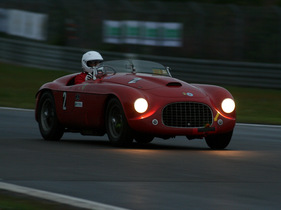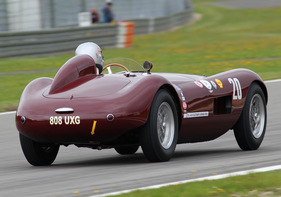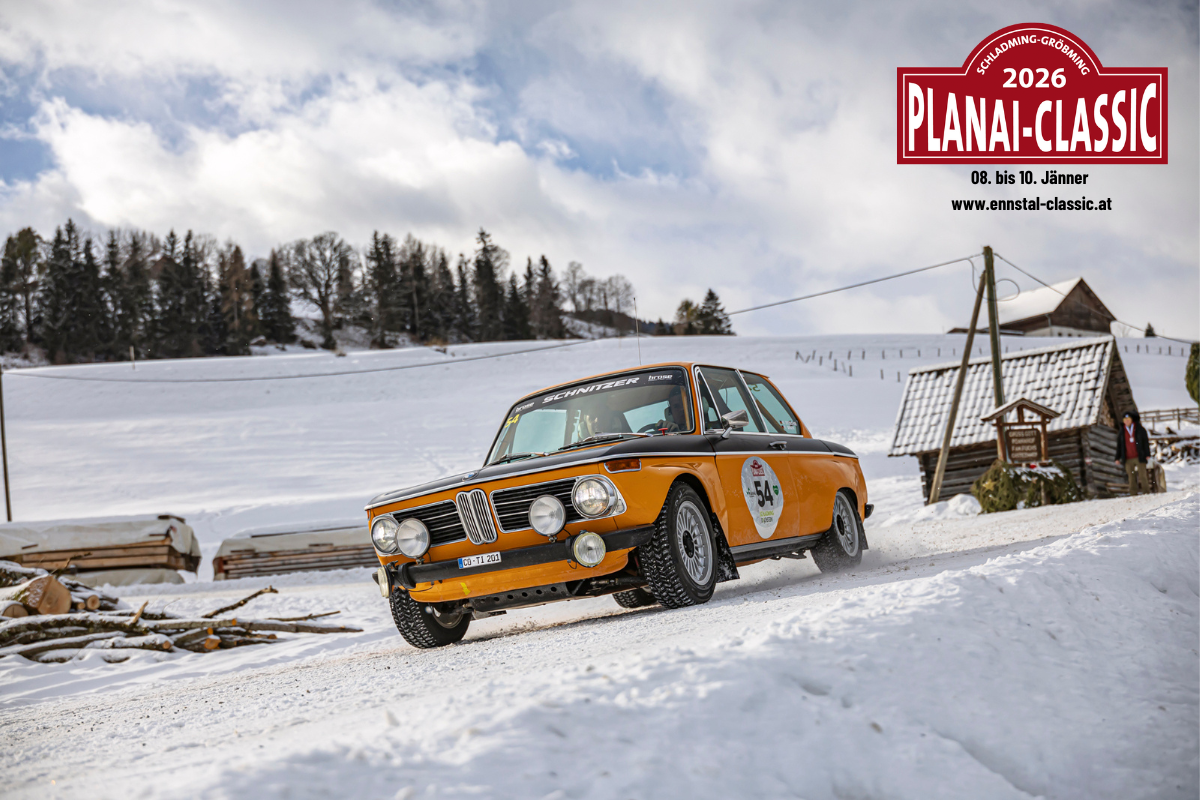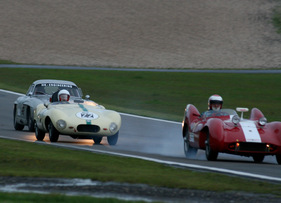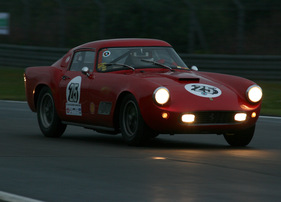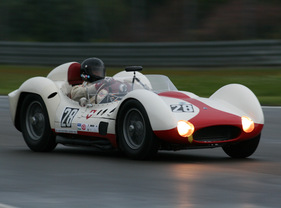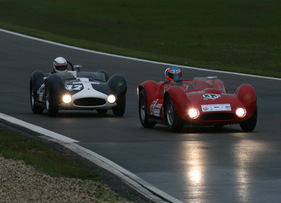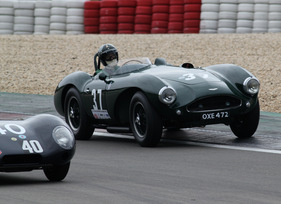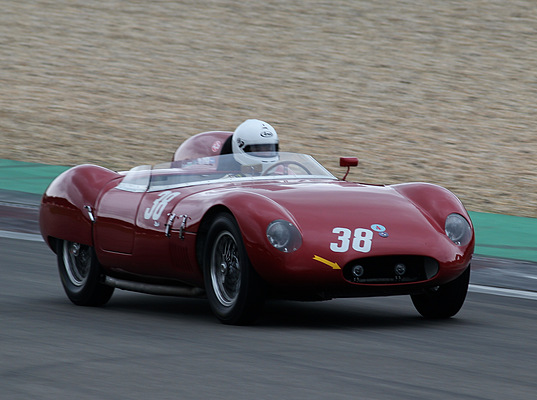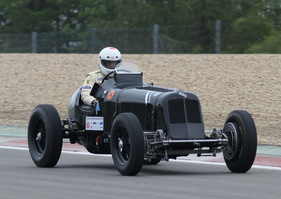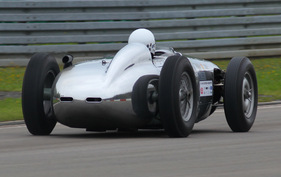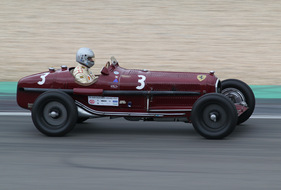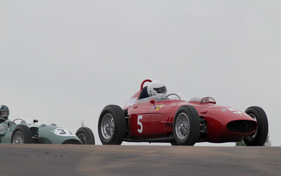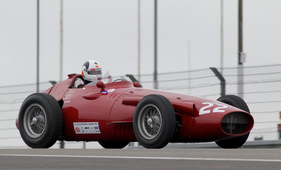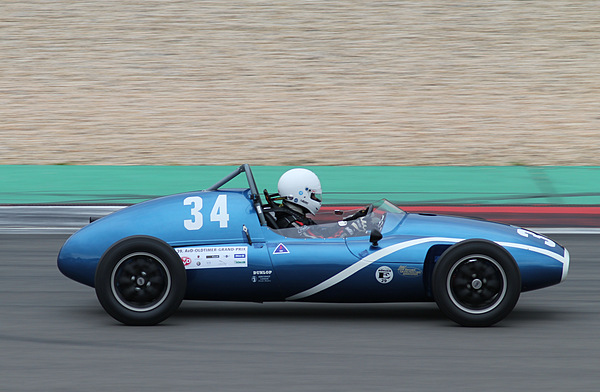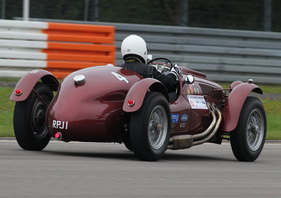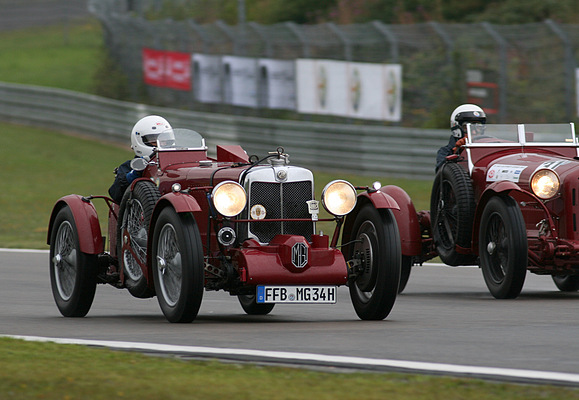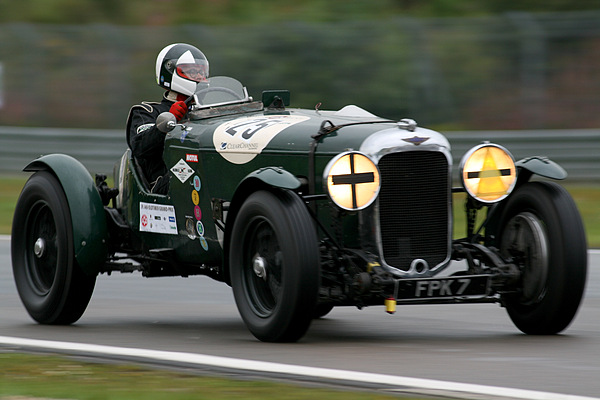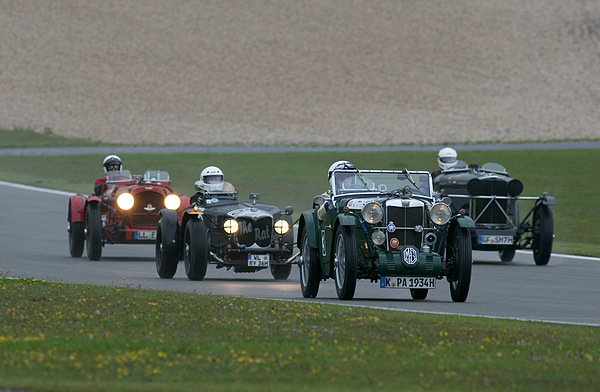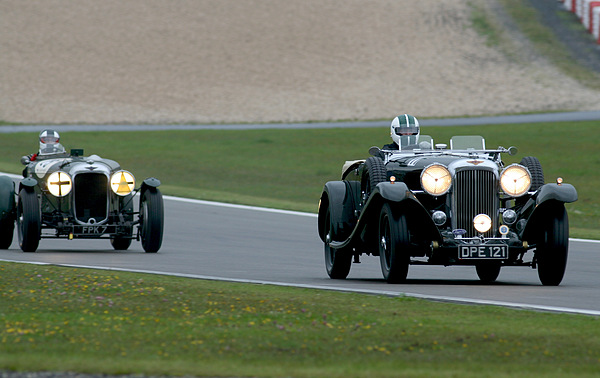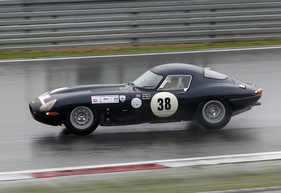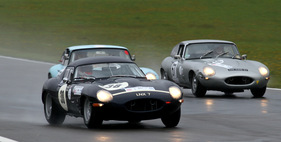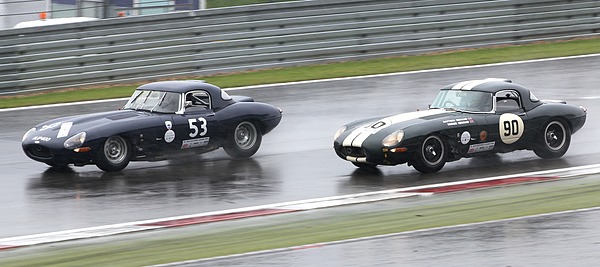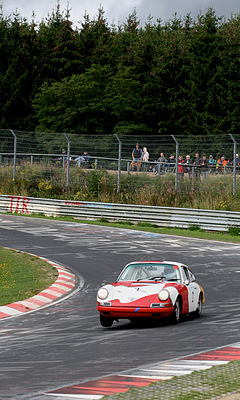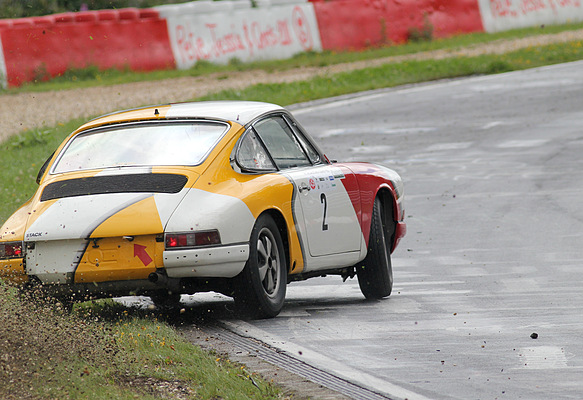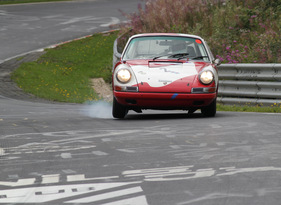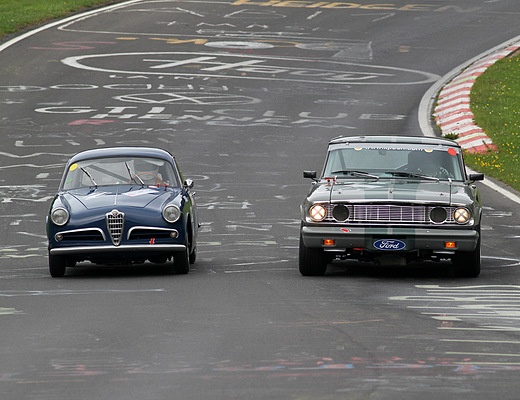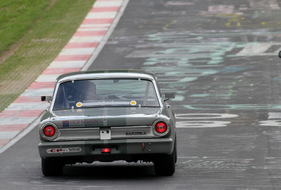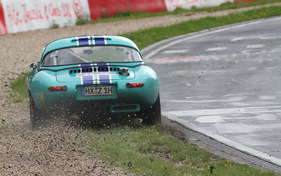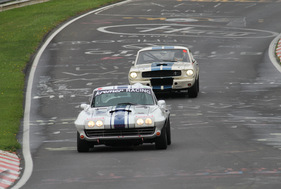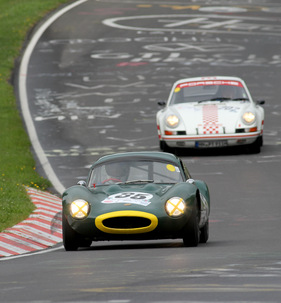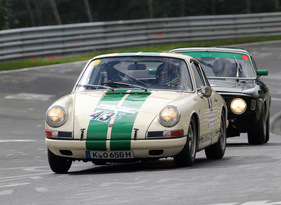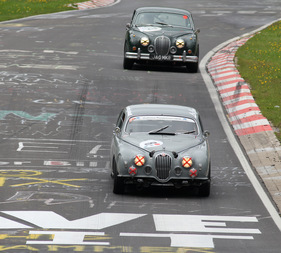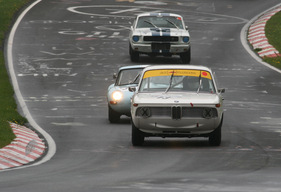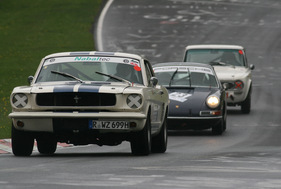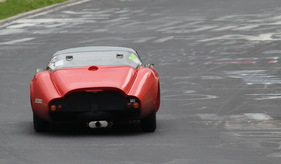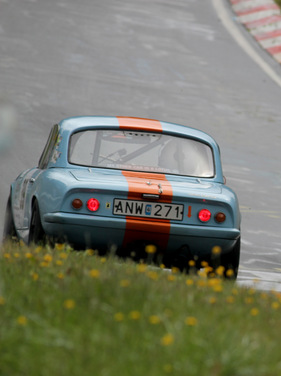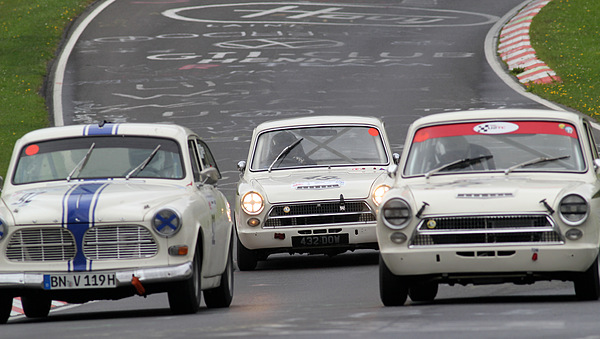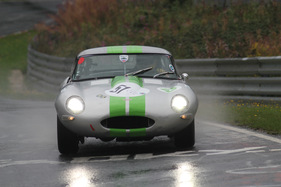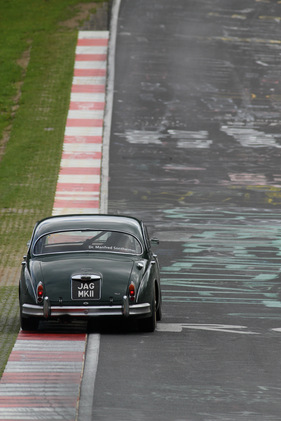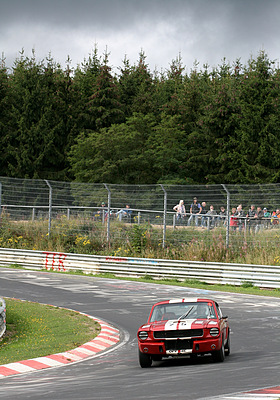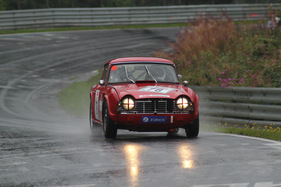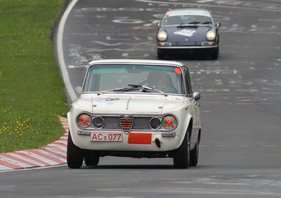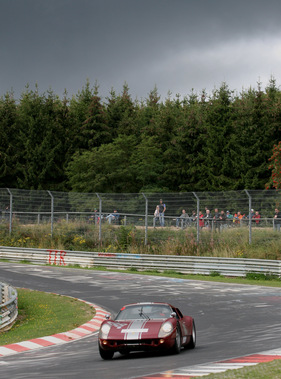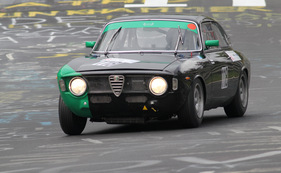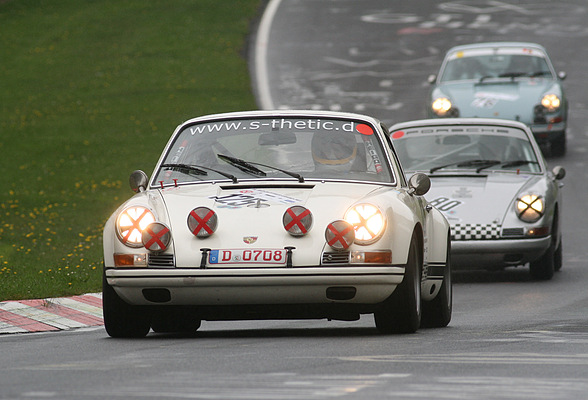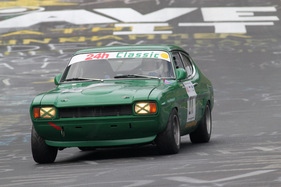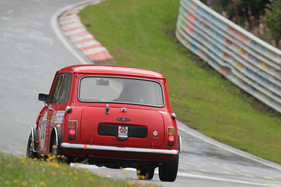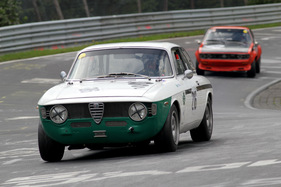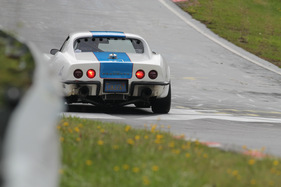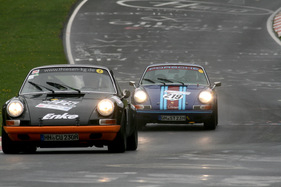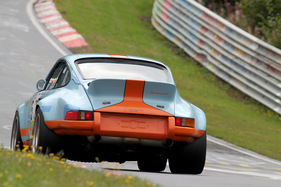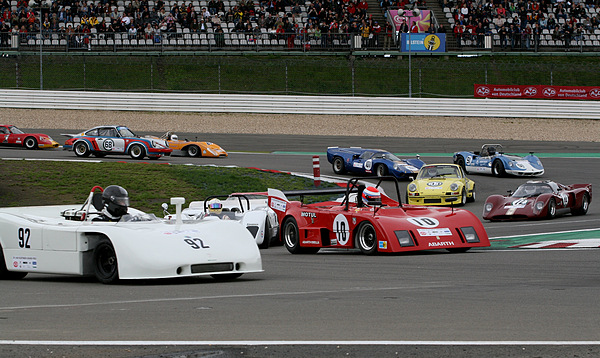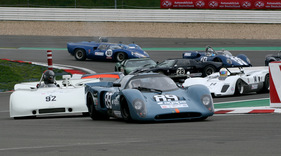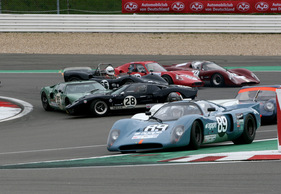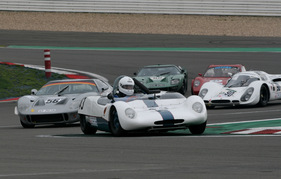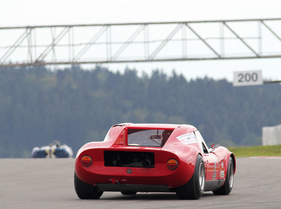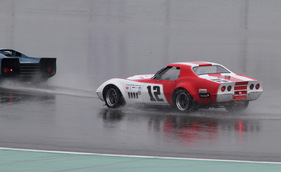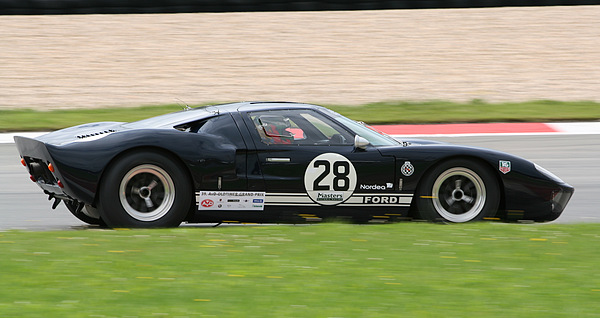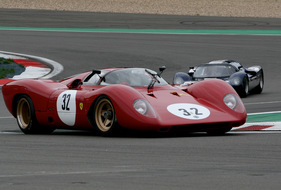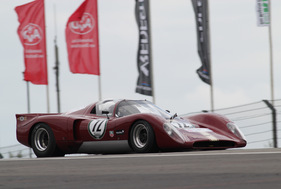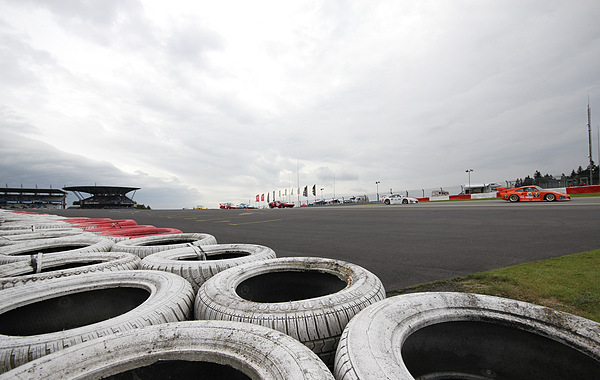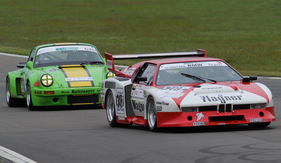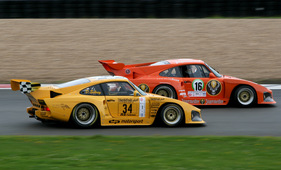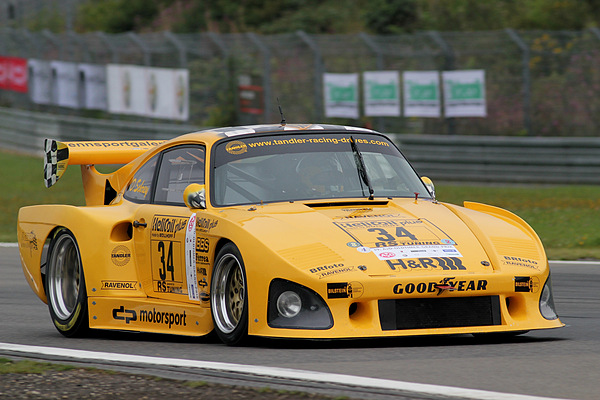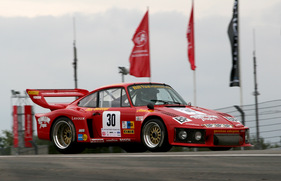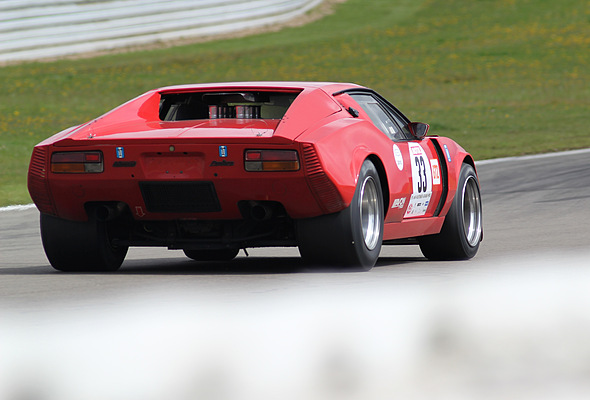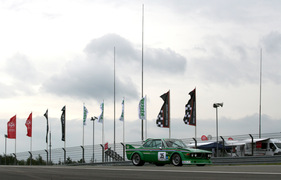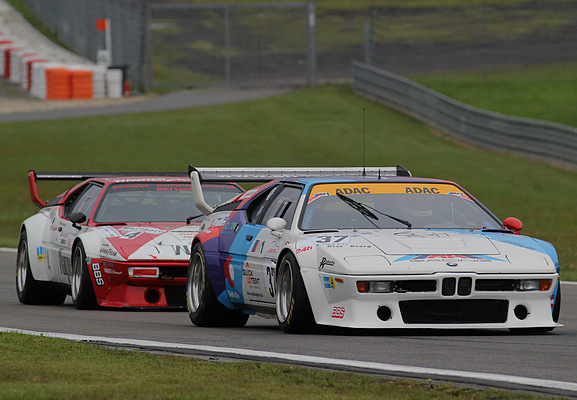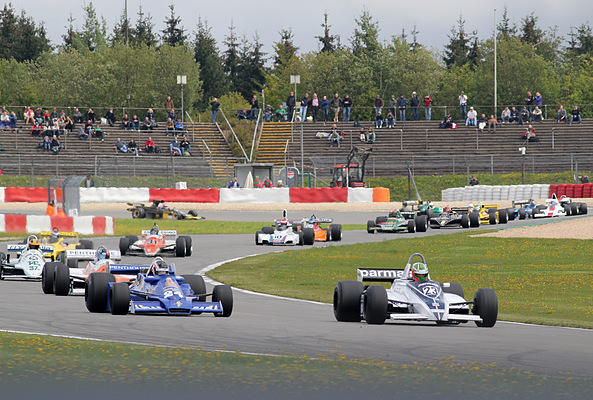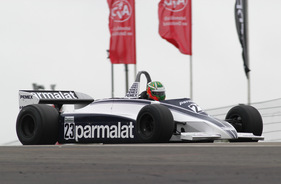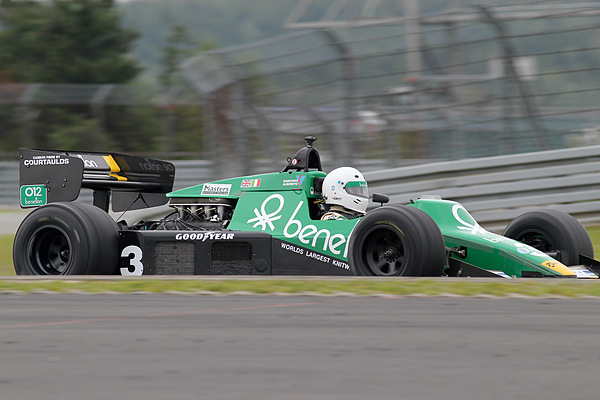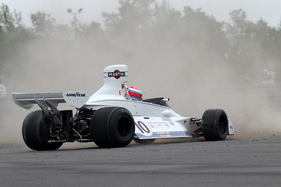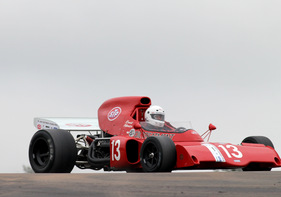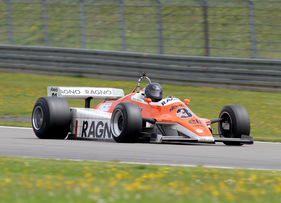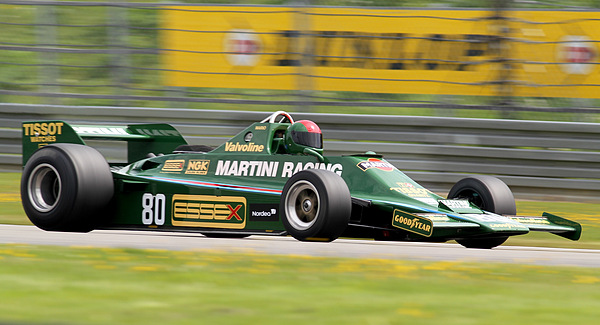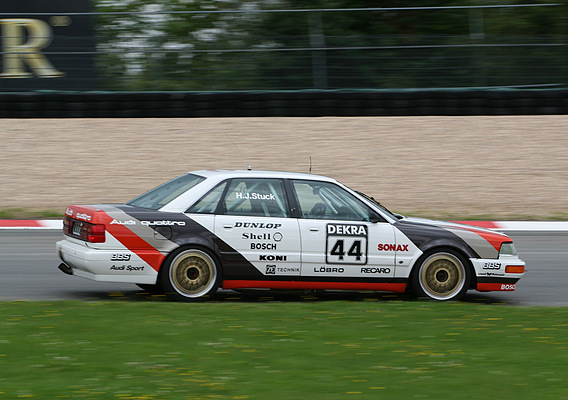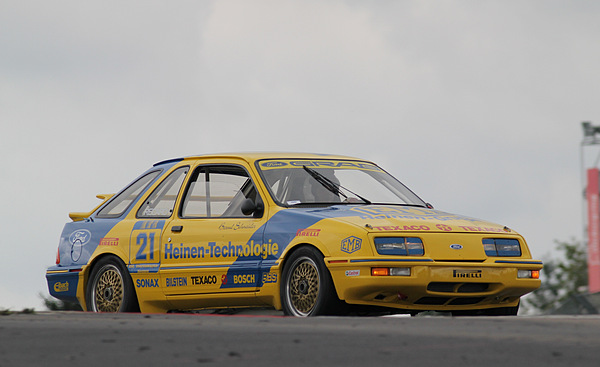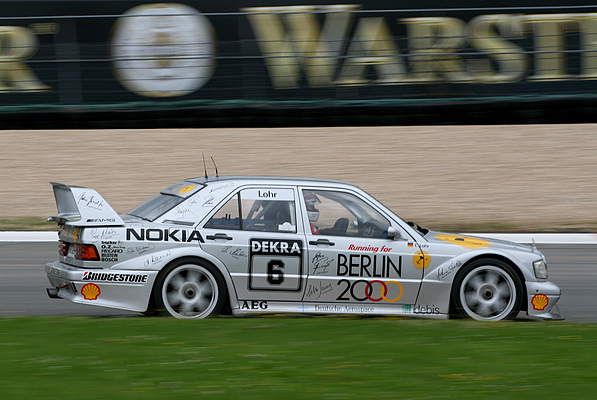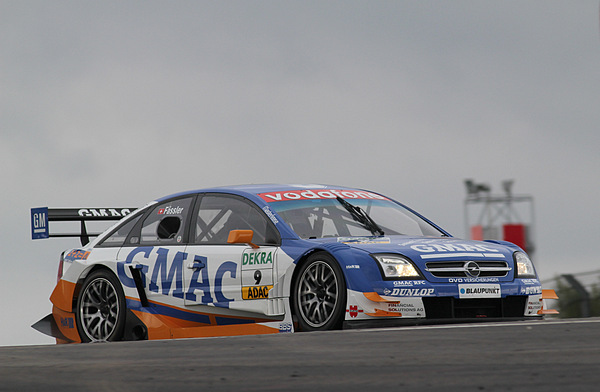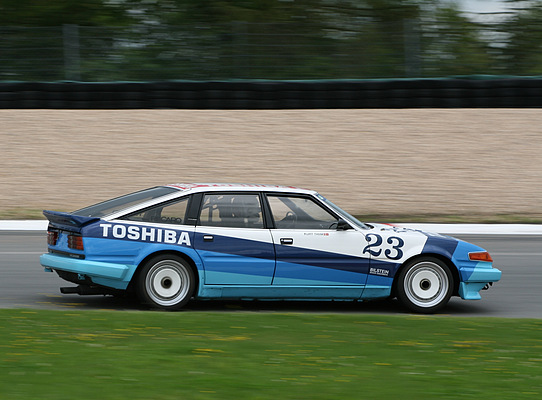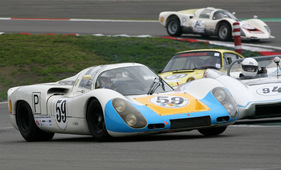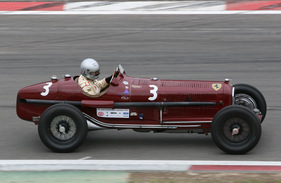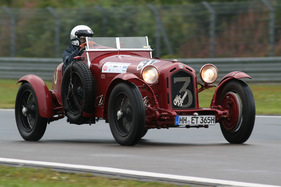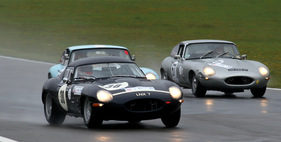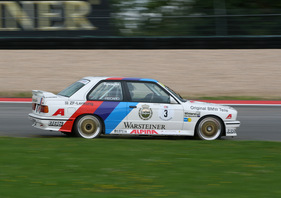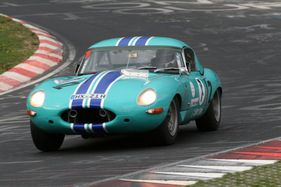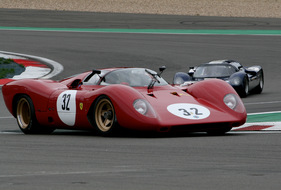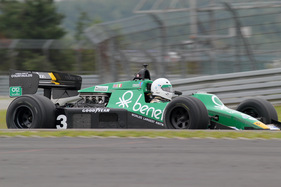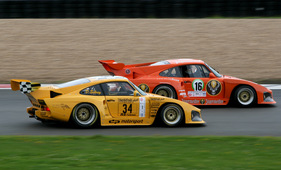"I've never experienced such bad weather in all these years, or even decades," said one racegoer at the AVD Oldtimer Grand Prix 2011, who has hardly missed a race at the Nürburgring since the 1960s and can therefore look back on a wealth of experience.
In fact, not a day went by without rain. The participants in the AVD Historic Marathon on the Nordschleife were hit very hard on Friday, but even the drivers of the E-Type Challenge could hardly imagine what a dry Grand Prix circuit would feel like at the end of the race weekend. The weather probably also put some fans off making the trip to the Eifel, as the grandstands were less full than in other years, especially on Saturday.
Nevertheless, there were reportedly around 65,000 visitors. However, due to the cool weather, many visitors probably left the race track a little earlier on Saturday evening and thus missed one of the highlights of the 2011 edition of the Oldtimer Grand Prix, the twilight/night race of the historic sports cars and GT vehicles up to 1960/1961.
Unique variety of classes and vehicles
As every year, the Oldtimer Grand Prix was once again characterized by the variety of classes and vehicles. Where else in the immediate vicinity can you see pre- and post-war sports cars and racing cars, Formula 1 vehicles, DTM/DRM/STW racing cars, racing cars of vintage and youngtimer age and the beautiful GTs and sports cars of the fifties, sixties and seventies in one day? And all this in a species-appropriate manner, i.e. sportily driven on the race track? Does it start with the pre-war sports cars, which were driven according to uniformity regulations but successfully defied the rain and delighted the public with their inimitable sound? At the other end of the spectrum, the youngtimer racing cars in the AVD Youngtimer Sprint for touring cars and GTs built between 1972 and 1990 really heated things up. Even the Masters GTs, which are designed for Gran Turismo 1965, did not want to be left behind.
AVD Historic Marathon on the Nordschleife
It was worth arriving early on Friday. Four hours of racing action on the Nordschleife were on the agenda, the field of participants was attractive and organized in two main groups (races 11 and 12) for younger and older vehicles. Experiencing these GTs on the Nordschleife, where the road is less flat, the run-off areas minimal and, above all, the weather has a considerable influence, was an experience in itself. Anyone who has seen Walter Röhrl in the Porsche 911 lap after lap on three wheels will not soon forget it. The effort was also rewarded, with 4th place overall for the Röhrl/Zumtobel pairing and, of course, a class victory.
The overall winners were Marcus von Oeynhausen and Frank Stippler in the Gotcha Historic Racing Team Jaguar E Type. Before the heavy rain, which set in after around two hours, "Barney and Fred" were still in the lead in the Ford Fairlane, but they still won their class. Alexander Berstein and Wolfgang Weber came third overall in another Jaguar E-Type. The fastest Cobra finished in fifth place, followed by a Jaguar E-Type and the impressively fast Marcos 1800 GT of Allen Tice and Chris Conoley, who left even well-known racing drivers such as Claudia Hürtgen, driving a Porsche 911 together with Gaby von Oppenheim, in their wake.
Jaguar E-Type Challenge - happy birthday Jaguar E-Type
The two rounds of the Jaguar E-Type Challenge, races exclusively for the Jaguar sports car, which is celebrating its fiftieth birthday this year, were probably unique in the German-speaking world. Around 30 E-Types battled for trophies on the track, including convertibles, coupés, low drag coupés of all colors and years between 1961 and 1965 - a veritable one-make cup with beautiful cars and a breathtaking soundscape. Both races were won by Briton Garry Pearson, while second place in the first race went to Martin Melling/Jason Minshaw and Marcus von Oeynhausen respectively.
DTM and STW cars seen again
The DTM and STW cars from the eighties and nineties were a special treat. The Rover Vitesse, in which Kurt Thiim became DTM champion in 1986, was seen again. The Ford Sierra, in which Klaus Ludwig won the title in 1988, also took part. Hans Joachim Stuck's Audi V8 Quattro from 1990 was also on display, a car that was so successful that the FIA removed four-wheel drive from the regulations. And then, of course, there were also the BMW M3 and the Mercedes Benz 190 E in various evolutionary stages, and many will certainly remember the battles between these two types of vehicle.
Racing cars and GTs of the fifties at night
The racing cars and GT vehicles from the 1950s (up to 1961) drove into the twilight, which almost felt like night due to the poor lighting conditions, in a one-hour race on Saturday evening. At least the weather was kind and closed the floodgates for a moment, allowing the drivers to race on a largely dry track. At the front, Max Werner and Alan Minshaw in their Maserati T61s put up a fight that made you wonder whether the drivers were aware of the value of their cars. The lead changed hands several times and the gap between the two cars was less than a second for a long time. The fact that Max Werner was disqualified made no difference to Alan Minshaw's magnificent victory. Behind Minshaw, Simon Ham in the Lister Jaguar came in second on Saturday evening, followed by Irvine Laidlaw in another Maserati T61. Seven of the top ten places went to Maserati cars.
In addition to the thrilling battle for the lead, it was above all the impressions of the roaring engines and the headlights shining through the night that the spectators took home with them. Once again, this race was a highlight.
DRM Revival with Kremer victories
The two DRM Revival races were dominated by Team Kremer-Racing, who entered with two Porsche 935 K3s. Wolfgang Kaufmann won the first race with a wafer-thin lead over Daniel Schrey. The two of them were in the lead lap after lap and delivered exciting racing. Race number 2 was then won by Daniel Schrey, with an average speed of 146.236 km/h. A coffee run looks different. In general, the DRM races were characterized by the various expansion stages of the Porsche 911, with a BMW M1 only appearing in 5th place in both races. However, Michael Erlich's beautiful de Tomaso Pantera was also impressive, finishing 11th and 8th overall.
World Sportscar Masters
Excitement was also on offer in the World Sportscar Masters. Although it had long looked like a Chevron victory in the first race, Manfredo Rossi di Montelera in the Abarth Osella took the winner's trophy in the end. The race took place on a dry road and the average speed of the winner was 146.434 km/h. Sandy Watson followed in second place in the Chevron B8 and third place went to David Franklin in the beautiful Ferrari 312 P. A spin by Joaquin Folch at the end of the home straight prevented him from taking advantage of his good starting position in the Ford GT40 in the first race, but in the second race he left nothing to chance and won ahead of David Forsbrey in another GT40 (Mk I). The second race took place in very wet conditions (Forsbrey called it "very very wet") and hardly any of the top drivers were spared pirouettes or braking. The winning car of the first race, the Abarth Osella, finished third in the second race.
What makes the World Sportscar Masters such a hit, however, is the wide range of vehicles on offer. Rare sports car classics such as the Cooper Monaco King Cobra, the McLaren M1, the Wolverine Sportsracer, the Porsche 906, 907 and 908 made the hearts of the spectators beat faster.
Historic Grand Prix cars up to 1961
The two races of former Formula 1 and Grand Prix cars on Saturday and Sunday featured beautiful Grand Prix cars from the years 1934 to 1959. While Tony Smith was able to shine in the Ferrari 246 Dino on Saturday in good conditions, Paul Grant won on Sunday in the Cooper Bristol. Smith finished fourth in the second race, while Willi Balz drove his Maserati 250 F to second place, just ahead of Allan Miles in an identical car. On Saturday, Hubert Fabri drove the Aston Martin DBR4 to second place, followed again by the Maserati 250F of Allen Miles/Gerry Hann.
Grand Prix Masters, Formula 1 cars of the recent past
Many of the spectators probably remembered some of the Formula 1 racing cars that competed in the Grand Prix Masters. Two Fittipaldi (back then they were still called Copersucar), two Arrows, several Lotus, March and Brabahm, as well as a Williams, a Shadow, a Ligier, a Surtees, a McLaren, a Hesketh and even a Tecno took to the track, which was dry for the first race and wet for the second. Roland Kinch won on Saturday in his Arrows A4 ahead of Joaquin Folch, who had led many laps. In Sunday's race, Steve Hartley then won on the Arrows A4 ahead of Roland Kinch and Richard Barber on the Fittipaldi F5A. The finish of the two yellow Fittipaldi racing cars in the first race will certainly remain unforgettable, something that had never happened in this way many years ago.
See you again next year
Many of the spectators (and drivers) are regulars and have been coming to the AVD Oldtimer Grand Prix for many years. Some of them may even have attended in 1976, when everything was a little less commercial and more "hobby-like" (see report in Automobil Revue No. 35/1976). And some people probably remember these events a little wistfully from the 1970s, when the drivers still raced in light clothing, with open helmets and without "onboard" cameras. The fact that safety requirements have steadily increased over the years is also a good thing and doesn't take away the joy of the "castor oil smells and scratching gears". So, see you next year!
Race results in detail
The complete race results as well as the start lists can be found on the AVD Oldtimer Grand Prix 2011 website in the archive section.


